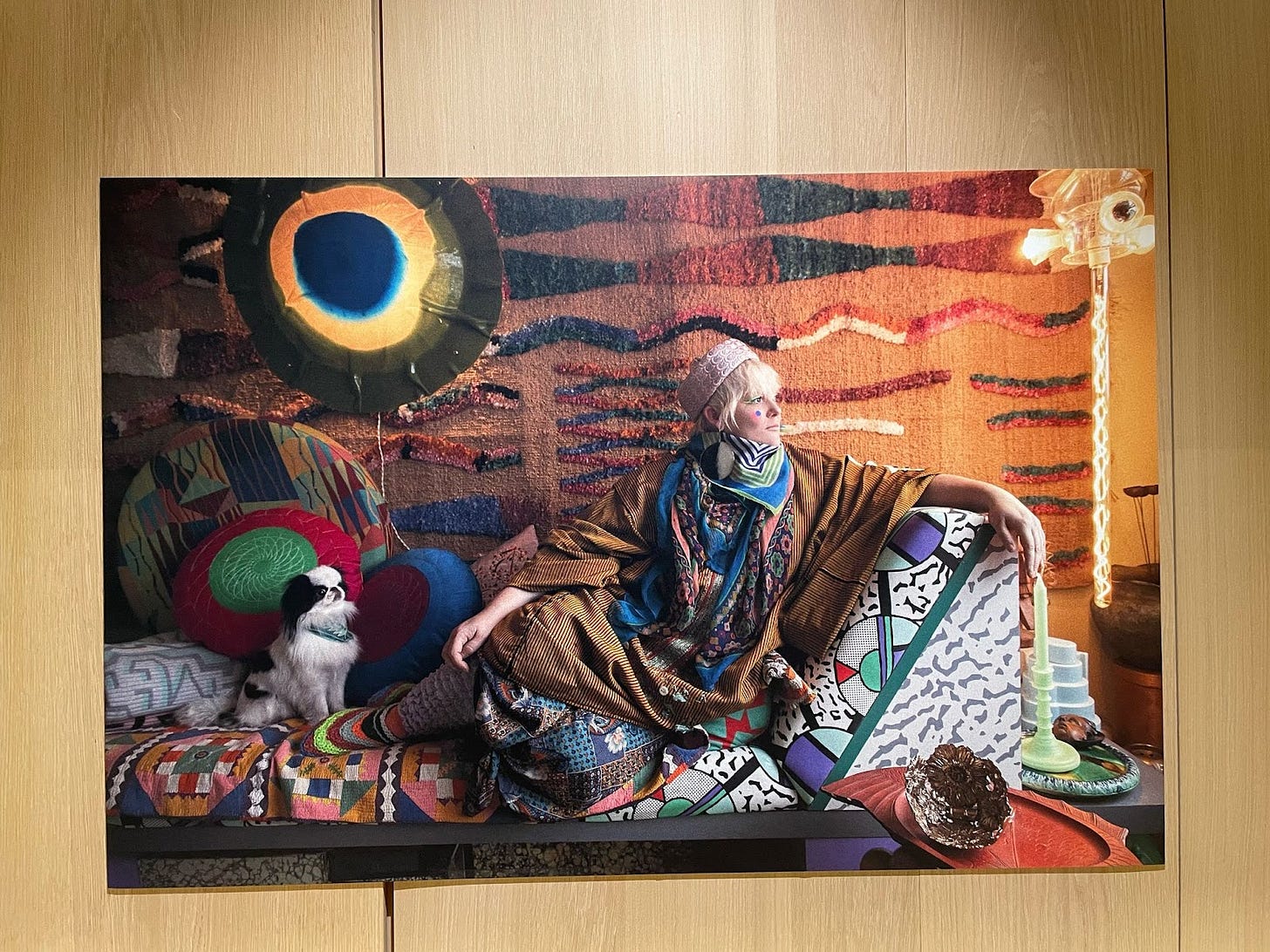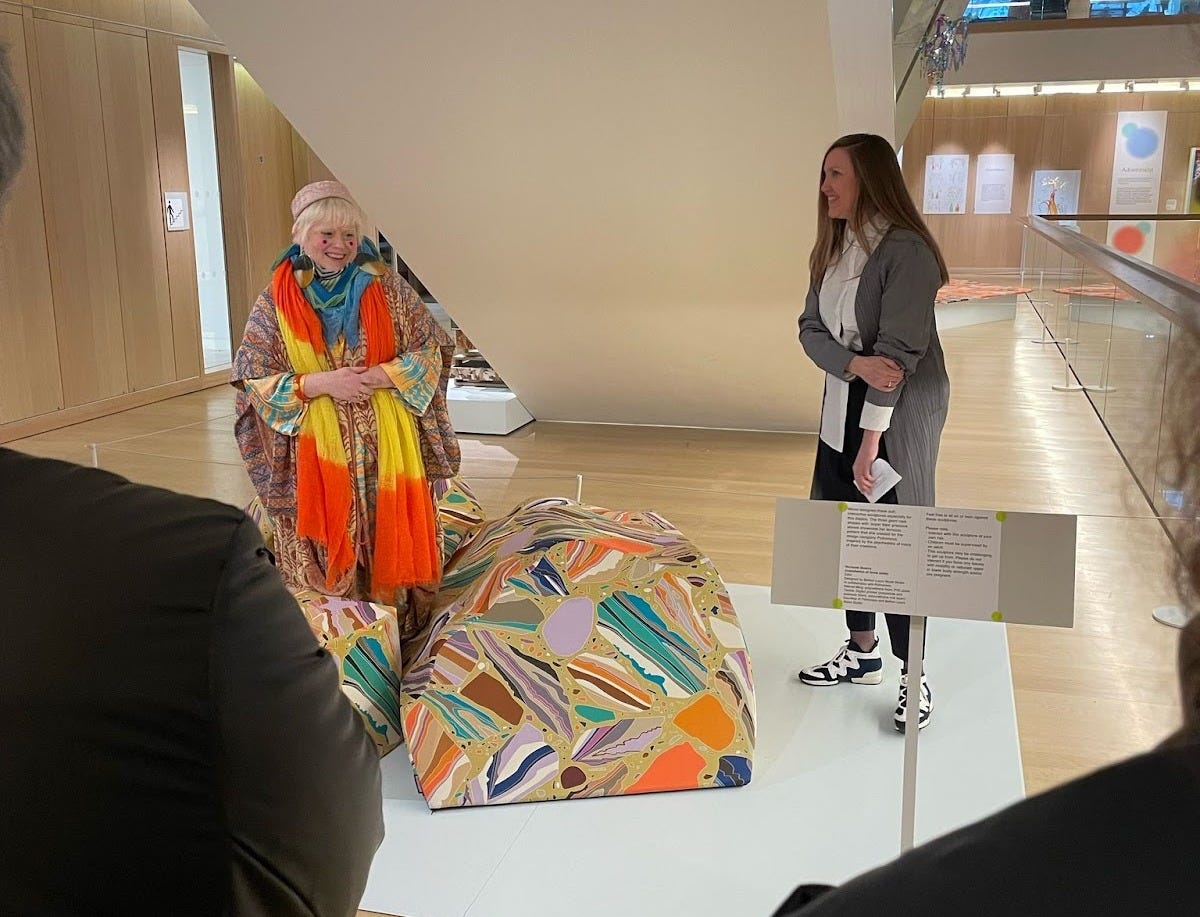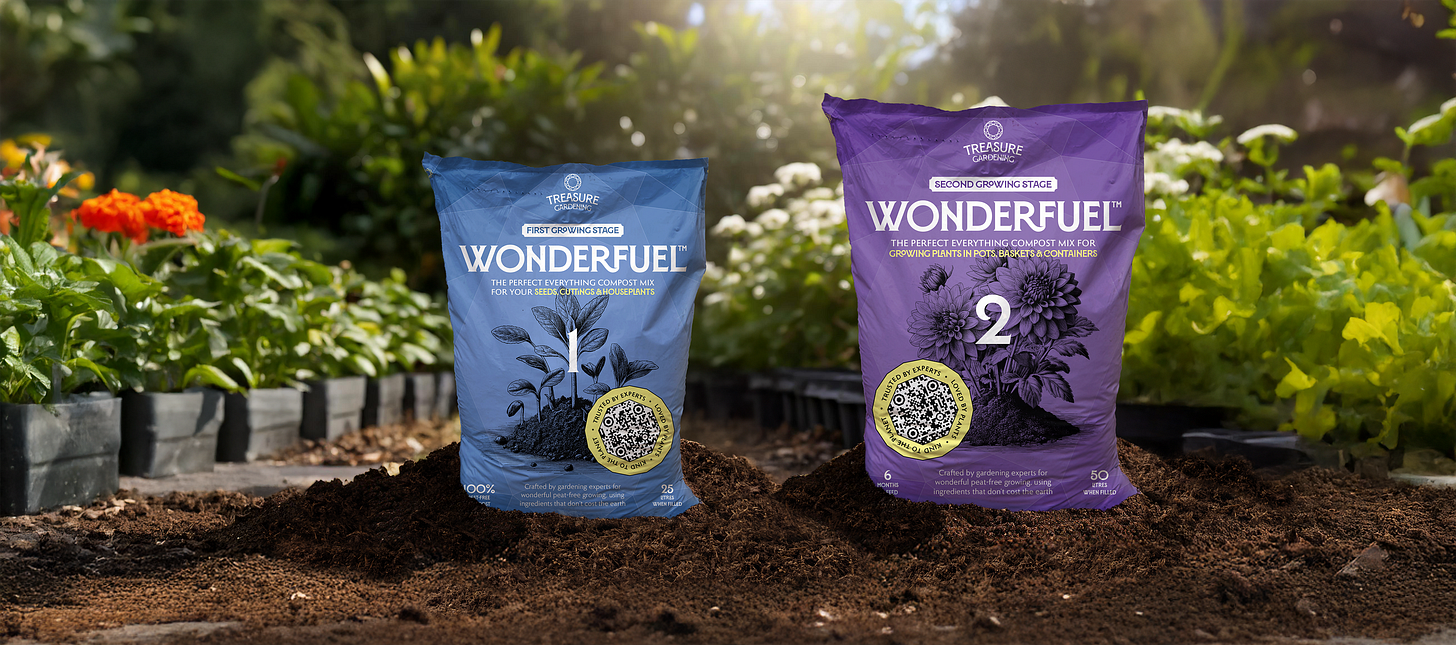UK government’s growth ambitions threatened by widening creative industries skills gap
PLUS: Bethan Laura Wood launches PLATFORM at the Design Museum
The rapid growth of the UK’s creative industries has earned them a place in the UK government’s Industrial Strategy as a priority sector. Yet the education and skills system has not been supported to keep pace. This has led to a widening gap between the skills the workforce has and what employers say they need. This is the key finding of a new report ‘Skills Mismatches in the UK’s creative industries’ published today by the Creative Industries Policy and Evidence Centre (Creative PEC) as part of their flagship ‘State of the Nations’ series.
Heather Carey, Co-Director of Work Advance, who produced the report for the Creative PEC,spoke with Fashion Roundtable and answered some key questions:
1) Why does DCMS use such a narrow definition of the fashion industry and how can we change this?
“This is one for DCMS. However, you can find the background on the methodology used to classify the CIs here, here and here.”
2) The report cites a skills gap which Fashion Roundtable has been lobbying on for years. How can we fill that and what do we do to ensure the rollout of T Levels for garment workers for instance is nationwide?
“The research suggests the underlying causes of skills mismatches in the creative industries are multi-faceted. Some issues are grounded in the need to build a skills system that is more agile and responsive to industry needs. With skills deficiencies across a whole range of areas (specialist technical skills, advanced digital but also transversal skills), there is a clear need for creative education and skills provision to be more effectively coordinated across education pathways, from developing creativity, critical thinking and problem-solving in primary and secondary education to strengthening technical routes (inc. Apprenticeships and T Levels) in further and higher education.
The research does, however, also point to a need for greater employer engagement in the skills system and greater investment by creative businesses in workforce development. Creative employers are less likely than others to have provided training for their workforce, and less likely to engage with mainstream skills providers, like FE colleges. In future, we need to see greater proximity between education and industry: stronger partnerships between creative employers and training providers, to deepen understanding of the changing skills needs of the sector, support knowledge transfer between those working in the industry and those teaching the next generation of talent; and more co-design of high-quality, flexible, skills provision.”
3) What can the report say about how we can build better UK-wide supply and value chains once we have those skills in place?
“This hasn’t been the focus of this research, though the report does highlight the need for a stronger focus on management practices that effectively utilise the skills of the workforce in order to drive innovation and firm performance.”
4) The report mentioned AI as a factor in the changing sector and workplace, will future research look into how AI will affect creative roles and how we can protect these roles, as well as IP?
“The forthcoming creative skills audits will look in greater depth at how skills needs are anticipated to change in the next 3-5 years and the external factors driving these shifts. We expect AI, and wider technological advancement, will feature heavily. Past research has suggested that creative jobs are more resilient to the potential displacement effects of AI (see here and Nesta’s wider programme of work on this here). And there is wider discussion on issues to do with AI and IP/Copyright, as demonstrated by the CMS Select Committee on AI and Copyright (here).”
5) What can business learn from this report and what would be your 3 key tips to take away from the report?
“My three key takeaways for businesses would be:
If you’re struggling to find the talent you need, you’re not alone. Nearly two-thirds of creative businesses with recruitment difficulties suggest they’re struggling to find candidates with the skills, qualifications or experience they need.
Skills investment will be vital to future success. Investment in new tech or the development of new products / services needs to go hand-in-hand with investment in people. A much higher share of skills deficiencies amongst the existing workforce are attributable to these factors in the creative industries, yet creative businesses are less likely than others to have provided training for their workforce. There’s also a need to have a sharper eye on management approaches that maximise the skills and talents of the workforce.
Shout about your needs, collaborate and build partnerships with local education providers. The new Government is advancing a whole range of measures to try and build a more agile and responsive skills system. But this can only be achieved in practice if employers are active and valued partners in the skills system, working collaboratively with other employers and collectively building long-term partnerships with education providers. This will be vital to deepen understanding of the current and evolving skills needs of the creative industries, to transfer knowledge to those teaching the next generation; and to co-design high-quality, flexible provision aligned with the needs of industry employers.”
Bethan Laura Wood launches PLATFORM at Design Museum
Fashion Roundtable attended the launch of Bethan Laura Wood’s Design in Residency PLATFORM exhibition last week.
The exhibition started with a talk from the designer herself, followed by a display of her current pieces that follow a sumptuous explosion of colour, pattern and texture. Wood explained that she is very passionate about collaboration, that it presents the opportunity to design something that she would not be able to make on her own, something that is of great value to our world and culture.
Her display consisted of purposeful tea stained mugs that observe our daily routines and how we have such disregard for the products that we use so regularly in our lives. A combination of playful textiles and design products were showcased to question our relationship with nature and the natural landscape. Hyperreality was also covered and our turbulent relationship with AI in the creative industries, making us all question what is a natural material in 2025 within design practice?
“Often things are not what they seem, and there is a negative side to only understanding them at face value. And then, of course, there’s another side, when you can discover a lot of depth at surface level.
We live in a world where the digital landscape has become more “real” than the physical - to some people it’s their chosen reality……If it’s not online, did it happen?
What is a “natural” material when everything is connected by layers and layers of mass consumption, systems of standardisation and industrialisation?” – Bethan Laura Wood
A question for all of us.
British Fashion Council Announces London Fashion Week Pop Up Shop on Regent Street
As part of its city wide celebration, the British Fashion Council (BFC) announces The London Fashion Week Shop to provide crucial commercial support for designers.
Curated by Ida Petersson and Lewis Bloyce, the archive and discovery space is open for a limited time only from Saturday 22nd to Monday 24th February at 245 Regent Street.
Consumers can shop an exclusive archive collection from some of LFW’s most iconic names including 16Arlington, Ahluwalia, Bianca Saunders, Completedworks, Conner Ives, HELEN KIRKUM, Johanna Parv and Saul Nash as well as sign up to attend a number of exclusive events including panel discussions and workshops .
The LFW Shop is part of the City Wide Celebration (CWC), a programme of events and promotions open to the public during LFW which take place across the capital's premier shopping destinations; Regent Street, Oxford Street, Soho and Covent Garden.
As part of the programme, designers, retailers, cultural institutions and premium restaurants and bars come together to celebrate the very best of London.
Packed full of unique experiences and activities, the CWC programme aims to support and promote retail across the UK while driving the fashion conversation forward via industry wide participation and partnerships.
Treasure Gardening: Turning Waste into Wonder
By Trewin Restorick, Founder of Treasure Gardening
Sustainability is no longer just a buzzword - it’s a necessity. Across industries, from fashion to horticulture, we are seeing an urgent shift towards more responsible and circular practices. With the launch of Treasure Gardening, we’re on a mission to revolutionise the way we grow plants by transforming waste into wonder.
Our debut product, Wonderfuel, is a game-changing peat-free compost that challenges outdated horticultural norms. Developed over eight years of rigorous research and testing, Wonderfuel has outperformed traditional peat-based alternatives in both lab and growing trials. David Hall, owner of professional growers Halls of Heddon, shared: “It did produce really good quality plants, even with Dahlias, which can be quite tricky.”
A game-changer in peat-free compost
Peat extraction is one of the most destructive practices in gardening, yet it remains a staple in compost production. Wonderfuel offers a high-performance alternative, blending green compost, coir (a coconut industry by-product), wood fibre and composted bark - all carefully sourced and rigorously screened to maintain consistency and quality. It has earned an ‘A’ grade from the Responsible Sourcing Scheme for Growing Media, making it one of the most sustainable composts available.
We’re also pioneering a new approach, with a revolutionary two-stage process for success as opposed to a multipurpose formulation that tries to cover all growing stages. Stage 1 caters for seeds, cuttings, and young plants and Stage 2 for more mature plants in containers and gardens.
We know that making the shift to sustainable gardening can feel overwhelming for consumers. That’s why we’re also committed to providing the education and resources needed to support both beginners and professional growers to support their journey in going peat-free.
Circular innovation across industries
At Treasure Gardening, we don’t want to stop at creating a sustainable compost - we want to drive systemic change across industries, much like the fashion industry’s growing commitment to circularity and responsible sourcing.
By partnering with Durstons, a 150-year-old family-run business transitioning from peat-based production, we are ensuring that Wonderfuel can be produced at scale with a partner who shares our values. Additionally, our collaboration with Toast Brewing, which crafts beer from surplus bread, allows us to support and champion like-minded innovative brands, offering Wonderfuel customers a chance to win a year’s supply of beer throughout the growing season.
We believe that waste is an opportunity, not a problem. Our future products will explore incorporating waste hops from breweries, dog hair, sheep wool and even seafood shells as fertiliser alternatives.
By embracing circular solutions, we can unlock extraordinary value - not just in horticulture, but across industries. We are calling on retailers, sustainability advocates and forward- thinking brands to help us push this movement forward. Wonderfuel is just the beginning.
To learn more about our mission and explore partnership opportunities, visit www.treasuregardening.co.uk.
Trewin Restorick was the Founder and CEO of Hubbub UK which has twice won ‘Charity of the Year’ for transforming the way environmental messages are communicated by bringing people and organisations together as a force for good.
Fashion Roundtable Library: The History of Information by Chris Haughton
A journey through the evolution of knowledge, communication, and information. The debut non-fiction book by best-selling author Chris Haughton. History, as it is often taught, is a list of kings and queens and treaties and events.
It presents the what and when, but it rarely asks why. Why is it that we had kings and queens at all? Why then all of a sudden did we abandon them and shift to democracies? Why did the world’s religions rise around the same time? Why is society dominated by men? The answers all come down to the same thing: information.
The striving to share information, and – at the same time – the striving to undermine it, explains so much of today's world and connects so many seemingly unconnected things: the rise of religions, states, science, democracy, the west, militarism, racism, fascism, consumerism, big tech, polarisation, and AI. This history of information is closely connected to the history of visual communication – and as these two are largely the same – it makes sense to tell this story visually: a history of graphics told through graphics.
The History of Information, through a mix of timelines, graphics, and illustrations, clearly breaks down and explains each concept for children and adults alike. The History of Information includes: A beautiful look at the story of information; from the first languages and cave paintings, through to how we communicate and record information today. Content written and illustrated by world famous and multi-award winning author and illustrator, Chris Haughton. A global journey throughout history from the origination of language, how information has been passed on and recorded, and how this affected humanity.
Read Meg Pirie’s interview with Chris about his concerns around AI and what it means for creatives here








